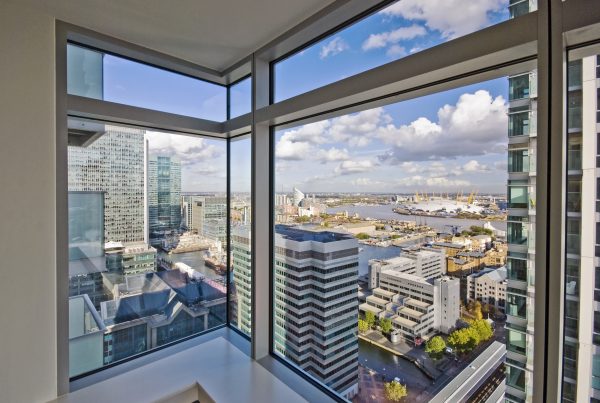When selecting windows for the house or office, we don’t give it much thought. Generally, the builders or contractors will choose the window units for you and get them installed. However, you must focus on installing energy-efficient windows that can protect the inside environment and help in reducing energy bills.
While considering different factors for choosing window units, you should consider the embodied carbon ratio. How embodied carbon is related to the windows and how it can impact your decision is what we are going to discuss in this article.
What is Embodied Carbon?
Embodied carbon is a collective term representing the greenhouse gas emissions of building materials. This value is calculated by the emissions generated through manufacturing, installation, maintenance, and disposal of the materials. Since windows are a part of the construction process, we must consider their embodied carbon value.
Given the urgency of combating climate change and global warming, any step towards reducing greenhouse gas emissions is crucial. Two types of carbon are released into the atmosphere through buildings: embodied and operational carbon.
Embodied carbon is the emissions from various processes of building materials, as we have discussed above. Operational carbon is the emissions coming from a building’s energy consumption.
Importance of Embodied Carbon Analysis
Identifying the embodied carbon of different construction materials is imperative to achieve energy efficiency. Construction materials emit different levels of greenhouse gases, which have a detrimental effect on the environment.
When you go out shopping for windows and the material required to install them or ask the builder to choose for you, always look at their embodied carbon level. The ideal embodied carbon level of double-glazed windows set into wooden frames is 40 kg CO2e per m2.
Similarly, the embodied carbon levels will change with the material used to fit the windows. A PVCu frame emits 52 kg CO2 per m2, and aluminium frames – 76 kg CO2 per m2.
In a building’s life cycle, 80% of the carbon comes from running the building, including lighting, cooling, and heating. The remaining 20% comes from embodied carbon related to the construction materials.
Taking all this into account, analysing the embodied carbon of different construction materials is essential to maintain the carbon emissions. Hence, architects and builders consider the environmental impact of all the materials. Ultimately, the type and quality of materials chosen with regards to the embodied carbon will also decide the quality of construction and the building.
Windows with better insulation properties have an impact on the building’s energy consumption. In this, different types of glazing impact the building’s
Importance of Standard EN15804 in Embodied Carbon Analysis
The EN15804 is a European standard meant to provide environmental product declarations (EPD) for all sorts of construction projects. In this, the builders are also required to share the EPD of glazed windows. The measures adopted to achieve this are aligned with the global project to achieve near-zero future emissions and combat the embodied carbon emissions on all fronts.
According to the Bringing Embodied Carbon Upfront mission, all buildings, infrastructure, and renovations must have at least 40% less embodied carbon. Coming back to the EPDs, these are standardised documents sharing common and transparent information about the environmental impact of different kinds of products.
In this document, we will also find guidelines, requirements, and principles, procedures for Type III EPDs. The information shared is specific to the construction materials and products.
For glazed windows, the EN15804 standard requires the architects and other professionals to conduct a Life Cycle Assessment (LCA). These LCA proceedings are meant to quantify the environmental impact related to the production, transportation, and installation of windows. Embodied carbon is a metric considered within the LCA report.
In the LCA report, we must cover;
- Raw material extraction
- Processing, Manufacturing and Assembly
- Transportation
- Product Usage and Retail
- Waste Disposal
Using the report information, requisite stakeholders and consumers can identify the impact of a product or material. They can then make an informed decision about the installation of a product according to its environmental impact.
C.U.in Window Performance with Embodied Carbon
To measure the embodied carbon levels of C.U.in windows, we conducted a live experiment with the EN 15804 standard. For this live study, we took the system boundary of stage A1-A3 Product and Module A4 Transport. Stage A1 represents the product’s position in the life cycle assessment.
In this;
- A1 – Raw Material Extraction and Supply
- A2 – Transportation of Material to the Factory
- A3 – Manufacturing and Fabrication
Module A4 transport is the stage where manufactured and fabricated products are transported to the building site along with the manufacturer’s packaging. The travel distance is 18 km from the C.U.in building to the site of construction.
According to the results, we were able to deduce that a triple-glazed window unit is 31% more carbon intensive than C.U.in windows at per m2 of IGU. In addition to this, the C.U.in windows weigh less than the other triple-glazed windows.

Since a building’s structure is responsible for at least 50-60% of the embodied carbon, weight reduction in the construction material is beneficial. It means that the building has to support lesser weight, which enhances the performance.
Conclusion
C.U.in Windows continue to prove its worth in almost all the performance-related metrics. We have run extensive testing and experiments with our window units and compared them with the performances of generally available window units. The C.U. in windows has shown higher performance, leading to less carbon emissions, higher energy efficiency, and additional cost-savings.





